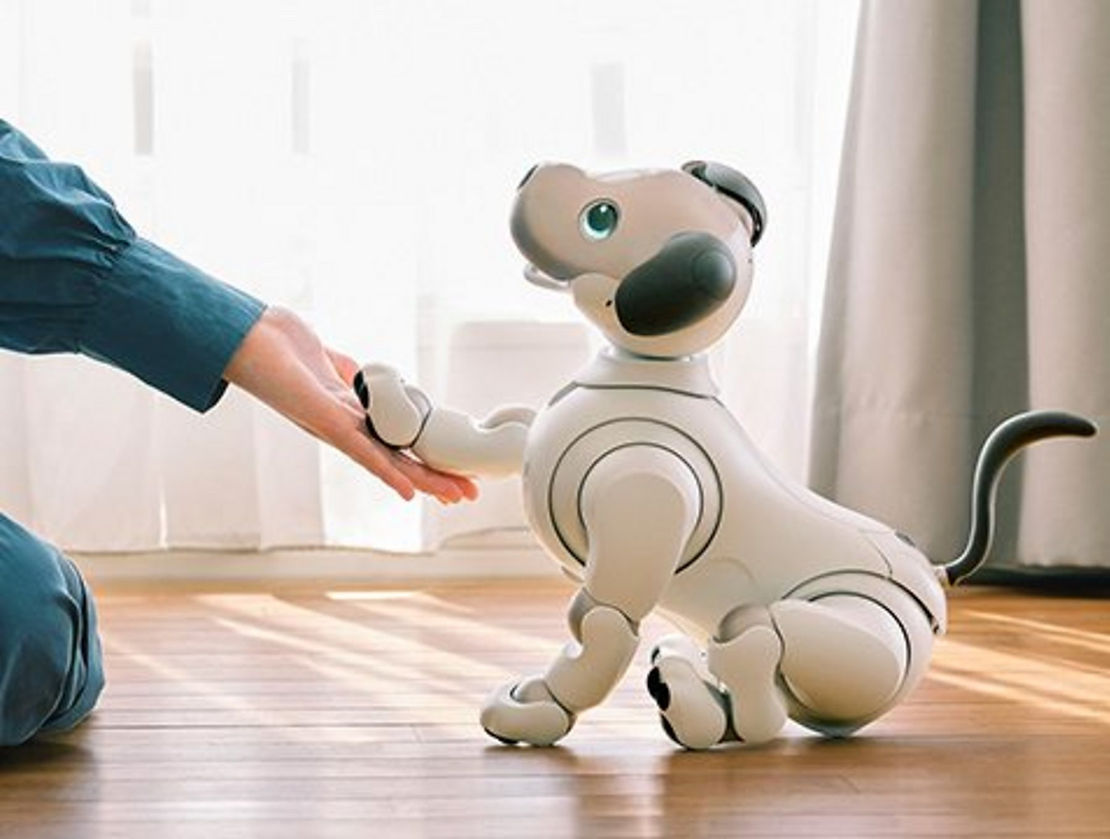By: Eleanor Liang
Are they a cure for loneliness, like a companion, or are they just an annoyance?
With modern technology, are robots able to cure loneliness?
A bright and prosperous time has arrived in California’s Bakersfield! Or is it just a time of great annoyance of the robots’ a-mile-a-chatter? Actually, it really does not matter which one it is because I am not ready for either of them to happen.
For nearly three hours at Audrey and Ken Mattlin’s house, who happen to live with several robots , the conversation was flowing non stop between the Mattlins and their chatty robots. I’m actually surprised that the Mattlins weren’t overwhelmed with the robots’ non stop babbling because I certainly would be.
Among the robots was Mr.ElliQ, real-life proof that a lamp can talk. He mainly talks to Audrey, whom he refers to by a nickname, often one that makes you laugh so hard your sides ache. For instance, Mr. ElliQ will endearingly say, “How did you sleep, Jelly Bean?”
Goo-goo-eyed Astro looks like a short-handled vacuum cleaner with an electronic tablet for a face. Astro is always following you around as if he is your servant. When you ask this interactive robot to play music like “Moonlight in Vermont,” he quickly turns into an upbeat DJ.
Finally, there’s Jibo, probably the most humanlike of them all, sitting on a table next to 86-year-old Ken. Ken loves asking Jibo to show off its “busted” dance moves.“He can twerk,” Ken explains, as Jibo promptly gyrates on its axis.
Meanwhile, ElliQ asked, confused,“How can I help?”
“By shutting up,”responded Ken, who certainly was super annoyed by ElliQ.
“You’re interrupting.”
His wife smiled, although she tends to take offense when ElliQ is spoken to harshly. At times, she opts to speak to ElliQ instead of her husband, so it’s entirely possible Ken is just jealous of ElliQ or wants to be the center of attention.
“If I say, ‘That’s just a stupid machine,’ she gets mad at me,” Ken exclaims.
The point of these robots and other technology like Alexa (which the Mattlins also use) are seen by some as a way to address the rising epidemic of loneliness and isolation felt by millions of older adults all around the world. Robot pets, now in use at some California nursing homes (like the Pacific Coast Post-Acute Nursing Home), are also becoming very popular.
“California, through its Department of Aging, has made $50 million in technology grants available to counties, which are exploring what might work best to address ongoing isolation. In Sacramento County, staffers at the Agency on Aging are testing out ElliQ. However, so far the grants are being used statewide primarily to invest in smartphones, tablets — including those designed specifically for older adults — and WiFi hookups and training,”explains The Los Angeles Times.
So far,the Mattilins aren’t part of any grant programs,they’re just customers interested in the modern AI technology revolution, so they bought a couple of interactive robots like ElliQ and Jibo.
“A growing body of research on companion robots suggests that they can reduce stress and loneliness and can help older people remain healthy and active in their homes,” Duke Today reported this month after a study conducted in part by Murali Doraiswamy, a Duke University professor of psychiatry and geriatrics.
“Right now, all the evidence points to having a real friend as the best solution,” continues Doraiswamy. “But until society prioritizes social connectedness and elder care, robots are a solution for the millions of isolated people who have no other solutions.”
Maria Henke, senior associate dean of the USC School of Gerontology, acknowledges both the benefits and shortcomings of robotic companionship. “You don’t want to spend Christmas Eve with a robot,” she explains.
USC professor Maja Mataric runs a robotics lab on campus, and she believes that the current crop of machines on the market have limited value for those cut off from human connections. She doesn’t think the devices are useful beyond that because they are not really personalized enough to address private needs.
Mataric has been developing robots that can help children with autism and older adults with dementia. “Maybe you’re slurring your words or not using as big a vocabulary as you were a month ago so those are early signs of dementia,” Mataric explains, a robot can process that information for a care provider.
A robot might also be programmed to remind someone they skipped yesterday’s walk and encourage them to exercise by saying: “I’m going to walk with you, so you can walk with your grandchild next week.”
The Mattlins worked together in retail electronics, and Ken still sells Wi-Fi streaming boxes. Seriously, he has the brain of a teen!
Ken can easily turn house lights on and off from his chair, and he’s even rigged his toilet with a bidet (to save on toilet paper) and a push-button device that raises and lowers the seat (this is probably the first time you’ve heard of chair labor). Various robots, meanwhile, can turn on the television. Astro, who wheels around like a loyal servant but is not, serves as a security guard with a built-in camera.
Ken and Audrey have two massage chairs in front of the fireplace, and they climbed in to demonstrate a bit of Bakersfield bliss. Ken’s, with lots of controls, looked like some alien pilot chair. From a reclined position, he summoned Astro, who hurried over like a loyal servant and took up a position at their feet. I could even visualize Astro bowing and asking,”What can I do for you, Your Majesty!”
“I could put drinks on there and he would bring them to you,” said Ken, pointing out Astro’s cup holders.
Can Astro do everything for you?
It seems that .pretty soon, robot labor will be super popular.
Sources:https://www.latimes.com/california/story/2023-07-22/column-these-family-robots-can-play-trivia-and-act-as-security-can-they-cure-loneliness











